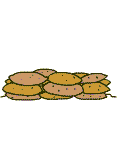
SLOVAK REPUBLIC VZ.32
Model: Vz. 32
Year: 1938
Manufacturer: CA Scholtz (Matejovce)
Side emblem: Slovak Patriarchal Cross in white (on both sides), blue lower band.
Internal marking: Sch-M
After World War I, the newly created Czechoslovakia (1918-1992), like other countries, entered a phase of creation and restructuring of its new army, in which the design of a new helmet was obviously proposed. These early post World War I designs were called successively: Vz. 20, vz. 25, vz. 30, (the latter helmet that was mostly exported and used in the Spanish Civil War) whose designs were based on the German M16 and the French Adrián.
Finally in 1934 a new design was approved, the Vz. 32, which broke with previous designs. This new model was used massively from 1936 by the Czechoslovak army, and it became one of the symbols of its identity.
The helmet is of a simple design, oval in shape, without any crest or rim, and with the lining riveted directly to the helmet, made up of 5 light leather bands (fastened with a rivet each) padded and stuffed with horsehair.
Despite the simplicity of its design, as a combat helmet it was very resistant, offering many inclined planes for projectile deflection.
After the annexation by Germany of the Southeast in 1938, and the invasion "almost without confrontation" of the rest of Czechoslovakia in March 1939, the newly created state disappeared, and with it the dissolution of its army. With the dissolution of Czechoslovakia, the Protectorate of Bohemia and Moravia under German control, and the independent state of the Slovak Republic were created, with which obviously the Czechoslovak army was also dissolved, creating the new Slovak army, which would fight allied with the Germans.
A part of the war materiel of this disbanded army went to the new Slovak army, and another part was requisitioned by the Germans. Logically, the helmet of this new design Vz. 32 was also affected by this "cast". The helmets requisitioned by the Germans were allocated to auxiliary bodies: Luftschutz, police, etc.
The specimen in the collection was used by the Slovak Volunteers who fought alongside the Germans on the Eastern Front (from September 1941). In order not to be confused with the Russian Army, given the resemblance of the helmet to the modelsssh 39Yssh 40, were painted by hand by the soldiers themselves, with a blue lower band of about 3 / 3.5 cm. and the Slovak Patriarchal Cross (Cross of Lorraine) in white on both sides usually between rivets, the cross was later suppressed, being too conspicuous.
On the inside of the helmet next to the manufacturer's ink mark Sch-M, there is the stamp of acceptance for use by the army (the Lion on the Czechoslovak coat of arms) next to the year: 1938 (exported helmets, eg. Chile, do not have this stamp), on the hull vault there is another oval ink stamp. There is also a maker's ink mark on one of the trim bands.
The manufacturers of this helmet model were:
-
Sch-M - CA Scholtz - Matejovce (Slovakia)
-
SDH - Dolné Hámre - Sandrik (Slovakia)
-
BGB - Bruders und Gottileb Brauchbar - Brno
There may be other brands: CET, FS, which indicate their destination to the police and passive defense respectively.
At the end of World War II, this helmet model fell into disuse by the Czechoslovak army, since when Czechoslovakia was part of the Soviet zone of influence, a variant of the Russian Ssh 40 design was adopted.


